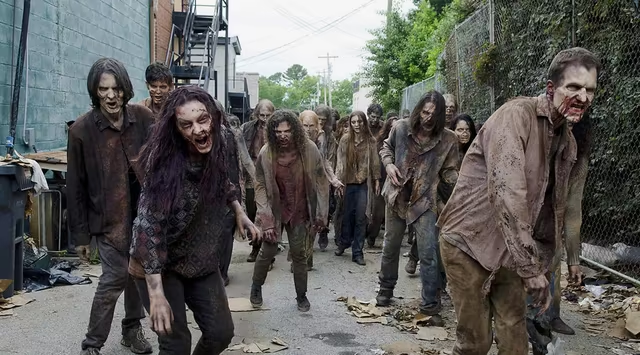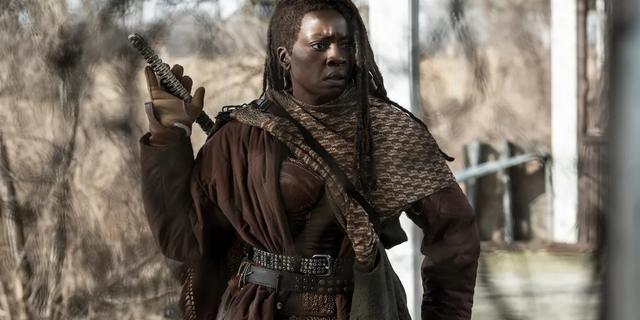If you click on a link and make a purchase we may receive a small commission. Read our editorial policy.
Ramón Pérez shares how his Kukuburi series is him "looking to escape the routine and ennui"
Writer/artist Ramón Pérez on his personal story he's been trying to tell for over a decade

The name 'Ramón Pérez' is familiar to a lot of comic book readers, with the Canadian artist having worked on everything from Hawkeye, Marvel Two-in-One, and Wolverine and The X-Men at Marvel to Jim Henson’s Tale of Sand, and the current Image Comics horror series Stillwater. Where his heart truly is these days, though, is Kukuburi – a sci-fi fantasy series that he created more than a decade ago as a webcomic, and has resurrected for a massively successful Kickstarter project.
Even after 10+ years, Kukuburi still gives Pérez the same freedom to experiment and play that it did when it first appeared, while also showing off everything he’s learned in the years since he originally came up with the concept. With the campaign entering its final week of funding – and already having made more than three times its original goal – Pérez talked to Popverse about where Kukuburi came from, what it means to him, and the ways in which the Kickstarter’s success has impacted his future plans moving forward.
Popverse: For those who haven’t checked out the Kickstarter page yet: how would you describe Kukuburi to someone who’s entirely unfamiliar with the concept?
Ramón Pérez: Kukuburi is the story of Nadia, whose rather mundane life is turned upside down when she stumbles into an unpredictable fantasy realm – an upside-down candy-colored world populated with bizarre bopples, frizzels, and quirky quizzels. But this peculiar world feeds off her subconscious, turning simple thoughts into dreams or nightmares! Readers get to join Nadia on her adventure through this fantasy-scape as she encounters strange denizens and new friends while being hunted down by the realm’s self-appointed king – and potential destroyer.

It’s an obvious question, I know, but where did all of this come from?
I had joined RAID – Royal Academy of Illustration & Design, an artist collective – back in 2006. While we were all working professionals, many of us desired to do more creator-driven comics work. We teamed up and created Transmission-X – later shortened to TX Comics – [which was] a webcomics initiative to showcase our works. At first, I began developing a crime noir to launch but soon felt the story might not be sustainable in weekly update chunks. The story was too complicated and the setting of the 1940s was also quite labor intensive from a research standpoint.
So, last minute, I decided to change my contribution to TX Comics to an idea revolving around a set of characters that I had doodled a year prior in my sketchbook. Those characters were Nadia, Rendo (a purple bowler hat-wearing Quadropus), Nug (a big boulder with arms), and one of the Meeps (a little fuzzball with two bird-like legs wearing a top hat) – and, scrawled beside, I had written the word 'Kukuburi.'

At the time, I felt constrained by many of the projects on my plate and needed to let loose creatively. You could say Nadia symbolized me at the time, looking to escape the routine and ennui of my career to step through the proverbial gate and, BAM, walk into a topsy-turvy world.
I was eager to create a place where anything was possible… and Kukuburi was it.
Kukuburi is something that’s been with you for more than a decade, at this point. What is it about this that keeps you coming back?
Kukuburi launched online in 2007 and was updated weekly till 2011, when my updates came in fits and starts. This was primarily due to my career shifting from freelance editorial and magazine illustration work to the time-consuming world of mainstream comics. Which meant a weekly work output to maintain monthly schedules – and less time to indulge my own creative efforts. While it was a joy to work on such characters as Spider-Man, Wolverine, Hawkeye, and collaborate on great graphic novels such as Jane, and adapt the lost Henson screenplay Tale Of Sand, I felt I had left my world behind.
I yearned to finish Nadia’s story and was eager to return to the world of Kukuburi. It felt like traveling for a long time and finally returning home. You don’t appreciate what you had till it’s gone. Kukuburi is home.

I’m trying to think of a good way to say, “I can’t tell what your influences are here,” one that sounds smarter than I am, but… I can’t tell what your influences are here. What I mean is, this world feels entirely complete in and of itself, and not drawn from any one style or era. I see early 2000s Cartoon Network as an influence, but I also see Studio Ghibli; I see Jamie Hewlett, and also Jim Henson. What actually went into making Kukuburi?
You mention a lot of the touchstones that are definitely subconscious influences. I grew up on a healthy dose of all of them.
When I set out to do Kukuburi, I wanted to do something different from what was – at the time – my day-to-day freelance work. I purposefully went out of my way to develop a different style for this story. I wanted to visually separate it from other work on my professional shelf, make it unique.
Before originally launching the series online, I re-drew and re-inked the earlier pages till I got to the point of satisfaction where I felt it appeared like nothing I had ever done. The creators mentioned above have been long-time inspirations and the creators of Mike Mignola, Arthur Adams, Kevin Nolan, Phillip Bond, Genndy Tartakovsky, Winsor McCay, and many more. Kukuburi is the facet that came from mixing them all.
There’s something really joyful about Kukuburi; it’s not just in the dynamism of the artwork, although that’s clearly part of it – this stuff moves – but in the color choices, the purposeful variety and inventiveness in the shapes of the characters’ silhouettes and designs, the openness of the layouts and making sure that each panel feels as if it has space to breathe and just *comfortably exist*, for want of a better way to put it. Is that something that’s entirely intentional, or is it a product of your feelings about the work? Did you set out to create this thing that’s very firmly “open and happy” or did it become that way because of what this strip means to you?
I went out of my way to bring a kinetic, almost musical, feel to Kukuburi. Again, this resulted from the confines I felt in my freelance work. Despite being a static medium, I love the movement that comics are capable of – and I wanted to showcase that in Kukuburi.
The character designs were a bit of a throwback to my youth and a healthy diet of Sunday Funnies: Calvin & Hobbes, Garfield, Hagar The Horrible, Mother Goose & Grimm, and Heathcliff. Those characters are designed around shape and silhouette. This approach was further reinforced by hanging out with creators like Darwyn Cooke, J. Bone, and Matt Forsythe while I was initially creating Kukuburi. Their backgrounds in animation reinforce the idea of including silhouettes as part of a character design.
I suppose, this is all coalesced into the vibe of “open and happy” that you mentioned. It was partially purposeful and a subconscious reaction to create something the opposite of what I usually worked on daily.

How personal is this story to you? I ask not just in the sense of, what does this mean to you (I already asked that, after all), but also: could you imagine other people writing and drawing stories set in this world, with these characters?
Nadia’s journey is quite personal to me – part of her is a reflection of my experiences and life while I was creating Kukuburi. Some of those sentiments are still present today, so I’m eager to return to Kukuburi and finish Nadia’s story.
I would love to see people play in the world of Kukuburi, should that opportunity come! It’s funny as there’s so much yet to happen in the story – elements and characters living in my head for the past decade that are eager to get out, with all of these secondary and tertiary characters that still have their stories to share. But, yeah, wow, I would love to see people play in Kukuburi.
You’re calling this the “premier volume,” and from what I understand, you’re planning on continuing the series annually if this goes well; how expansive do you think this story will get? Do you have an endpoint in mind, or is this very much a case of, “I think it can go on forever, because there’s more to it the more I work on it?”
When I first launched Kukuburi online, I had originally plotted it out at 750 pages. Bringing the series to print as a graphic novel series has always been my end goal; however, I had originally envisioned it as three 250-page books. To make publishing the books more achievable, I have now restructured my original outline into five volumes of about 160 pages, making it a more realistic endeavor on my part.
So yes, this Kukuburi story has a finite ending – it is Nadia’s story. That being said, the world is rife with stories to be told, so I’m always happy to see where the journey takes me.

Having helped RAID Press run several campaigns, I had a baseline of what I might expect for the Kickstarter, but it’s always nerve-wracking going into these crowdfunding scenarios, especially if your expectations are high. Needless to say, I was quite nervous, especially returning to a story I had begun years prior. However, once the funding numbers started to spike in the first couple of hours on the first day, I was blown away! Such a quick funding scenario was far beyond my wildest expectations, and was truly overwhelming. A big thanks to all the wonderful people who dove in so quickly with their support!
Knowing that there clearly is a hunger out there for this, what does that mean for the future of Kukuburi – or your future, for that matter? Could you see yourself devoting more time to this kind of work, knowing that there’s an audience for it?
For me, this Kukuburi Kickstarter campaign was a jumping-off point to return me to my indie roots. After working as a freelance artist for nearly 25 years, with the last 10 dedicated to working in comics for companies like Marvel, BOOM!, Dark Horse, and many more, I’ve been very eager to return to telling my own stories.

The campaign’s success cemented my decision to dedicate my time fully to Kukuburi, its ensuing volumes, and other creator-driven projects I’ve shelved for years. This campaign has shown me that stepping away from the norm of the comics industry is sustainable. I’m truly excited to embark on the next decade, creating my own graphic novels and comics and sharing them with a passionate readership and fan base.
Kukuburi is one of many great reads this summer. If you're looking for something, check out Popversse's summer 2022 comics guide.
Follow Popverse for upcoming event coverage and news
Find out how we conduct our review by reading our review policy
Let Popverse be your tour guide through the wilderness of pop culture
Sign in and let us help you find your new favorite thing.
















Comments
Want to join the discussion? Please activate your account first.
Visit Reedpop ID if you need to resend the confirmation email.